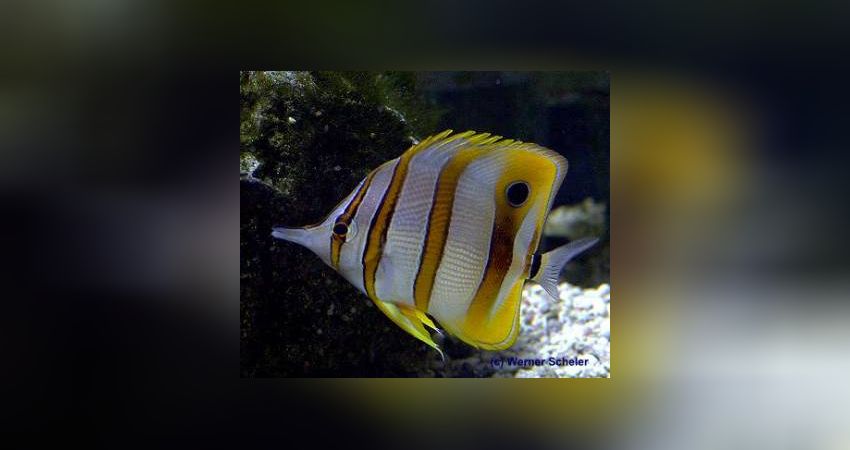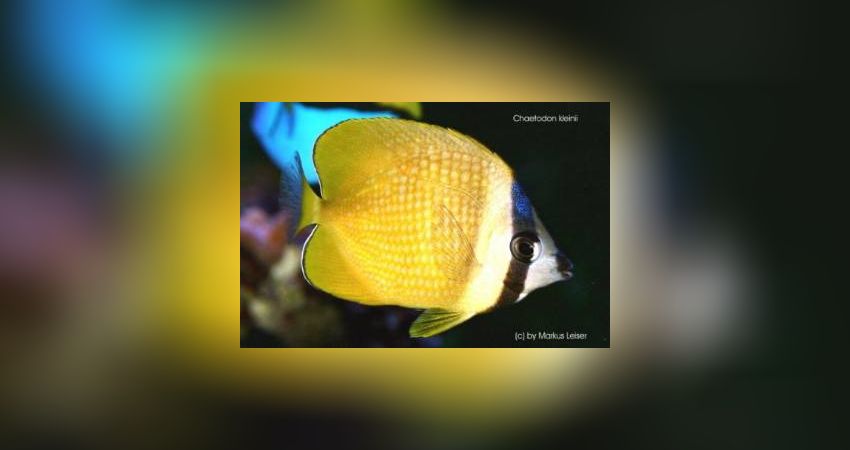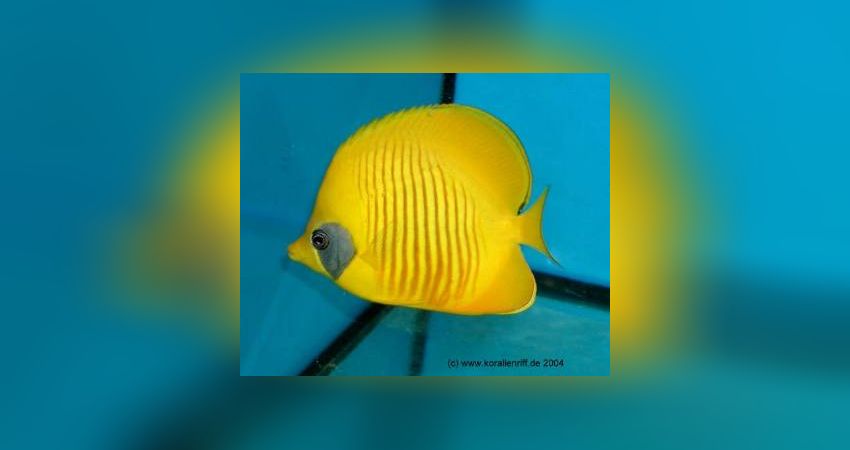33 - Butterflyfish in a community aquarium?

The question of whether you like to keep butterflyfish is clear, but does it really make sense in terms of the food requirements of the animals?
Mothfishes in the aquarium:
After the chapter on angelfishes, butterflyfishes are undoubtedly often targeted by new aquarists. Understandably, from the authors' point of view. Unfortunately, however, very few butterflyfish are suitable for community care in a community aquarium. They are simply too much of a food specialist and feast too often on our well-kept flower animals. Just take a look at the shape of the mouth, you can already guess that these animals have a different diet. We will therefore only deal with a few butterflyfishes that are more common in the trade. At the same time we simply want to tell you what you have to reckon with if you decide on certain butterfly fish. However, there are certainly butterflyfishes that hardly or not at all go to flower animals, such as the two well-known Prognathodes species. However, these are also rarely or not at all found in the trade.
You should therefore consider the stocking well beforehand, with most animals you can never be sure beforehand whether and to what they will ultimately go. Just to give you an example: Pygoplites diacanthus from one of the authors is supposed to go normally on leather or soft corals, but prefers to attack large polyped stony corals. As you can see from the example, it is difficult to predict what they will like. The same can happen with the butterflies, although the damage is probably more likely to affect stony corals. Almost all of the more than 100 species of butterflyfish will more or less eat our flower animals !

Chelmon rostratus:
Doubtless the most sold butterflyfish in the German country.....
It is not difficult to keep in itself and integrates well into aquarium life after a few days.... Everything is almost perfect...... yes... if it weren't for the food intake. Unfortunately, many pinnipeds don't accept any frozen food. Even today we can't say why this is, but some (clearly the vast majority of the animals) will not take any frozen food. The only food they will eat then is Röhrenwürmer or so called Zwergsabellen. (Once these are gone, the animals often die, they simply starve to death. There is no doubt that the butterflyfish divides the minds of the keepers. Some make the devastating experience that it starves to death, others bring it to the replacement food and therefore see the care a little easier. One thing you can't blame it for, however, is that it doesn't damage corals - like many other butterflyfish.
There may be individual observations whose tenor is different, but we think that he is not interested in corals. Chelmon rostratus is often recommended as a glass louse eater, which in our opinion is only partially true. There are quite a few aquarists who report that it does not eat glass lice. Likewise, there are many who report that their Chelmon has put an end to the glass louse infestation. Again, we do not know why this is so. Basically glass lice are part of the natural nutritional spectrum of the fish, just like worms. It is possible that some Ch. rostratus will swallow the glassworms once they have become accustomed to the substitute food... You can tell just by reading... You can't be sure that it will eat glass lice and you can't be sure that it will accept substitute food. Nevertheless, it is a beautiful and interesting fish that is a real enrichment for the aquarium. Before buying the fish, it is very important that you show it that it will accept replacement food..... !! If you do not, the probability is very high that your Chelmon will not live long. We don't want to write anything about pair keeping at the moment, but with a certain knowledge and the possibility to compare animals with each other this is possible. (personal message from Joachim Großkopf) Joachim Großkopf will, however, comment on this separately at a suitable place.

Chaetodon kleinii:
Immediately behind the orange-banded pinniped follows the, in direct comparison, rather less colourful Ch. kleinii. Presumably it is often on the wish list of many aquarists because of its fondness for glass roses. And probably exactly for this reason it is very often offered in the trade. Unfortunately, it (unlike Chelmon rostratus) will also eat many other things. It is also difficult to determine, the reports range from Röhrenwürmern über any kind of corals. But since it is really "greedy", it is easy to catch. The introduction is easy, as is the food intake of the fish.
A mating is also possible with Chaetodon kleinii. Helmut Strutz, an enthusiastic aquarist from Hamburg, has published some very informative articles in specialist journals (e.g. der Meerwasseraquarianer), which deal with the subject of mating and spawning behaviour. We find them very readable and informative and can only advise keeping these animals as pairs if you want to keep them.

Chaetodon semilarvatus:
This butterflyfish should serve as an example of the many other different butterflyfishes. It is sometimes a food specialist, and will most certainly damage your stony corals. However, it can be kept for a long time after the typical delicate start-up phase and, once established, will quickly accept replacement food in the form of frozen food. This butterfly should be kept as a pair - if space permits - in a community aquarium. However, the authors consider large tanks with soft and leather corals to be more suitable... We mention the word "large" because this butterflyfish in particular has a not exactly small final size of approx. 25 cm. It should also be noted that many butterflyfish are very delicate in the first few days after importation and are prone to ectoparasites. With good water values and balanced fish stocking, such as fast food intake, butterflyfish can be kept very well. However, if you care a lot about corals, you should do without these animals.
If you plan to keep one or more butterflyfish.... please inform yourself well beforehand! Especially with regard to the experiences of the many marine aquarists who have experience with coral attacks. But also what to consider when keeping several species. It is easy to put a fish in, but unfortunately catching it is often a difficult undertaking. In summary, however, it can be said that most butterfly fish pluck coral polyps and will not let this be in the aquarium.
Frank Diehl, Robert Baur-Kruppas
How do you like this article?
Info
Author

Bookmark
Comments
Topics
Similar articles
- 10 - Water, substrate and tank equipment
- 26 - Large polyp stony corals
- How a marine aquarium is created Part 21: Cyanos, fish and DIY aquarium net cover
- 22 - First stocking: Part 2
- How a marine aquarium is created Part 51: What are the monthly costs?
- How a seawater aquarium is created Part 11: the skimmer is installed
- Pünktchenbefall. Wenn neue Fische krank werden...
- Our house visit with Claudia the mummy of the anemonefish and Thor shrimps
- Feeding coral fish part 3
- How a marine aquarium is created-Part 7: The light
Comments To the top
Setzt man einen Falter als Fressfeind für bspw. Glasrosen ein und man fängt den Fisch wieder raus, weil er sich "entpuppt" hat, was die Schädigung anderer Nieder betrifft, so kann man in aller Regel davon ausgehen dass einige Monate später auch die Glasrosen wieder da sind.
Ausnahmen beim natürlichen Verhalten der Falter bestätigen die Regel ;-)
Gruss Michael
Please register
In order to be able to write something yourself, you must register in advance.







